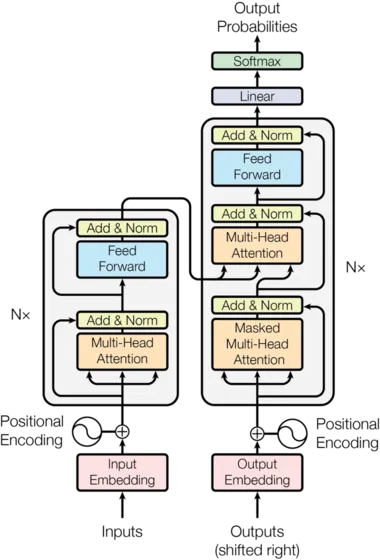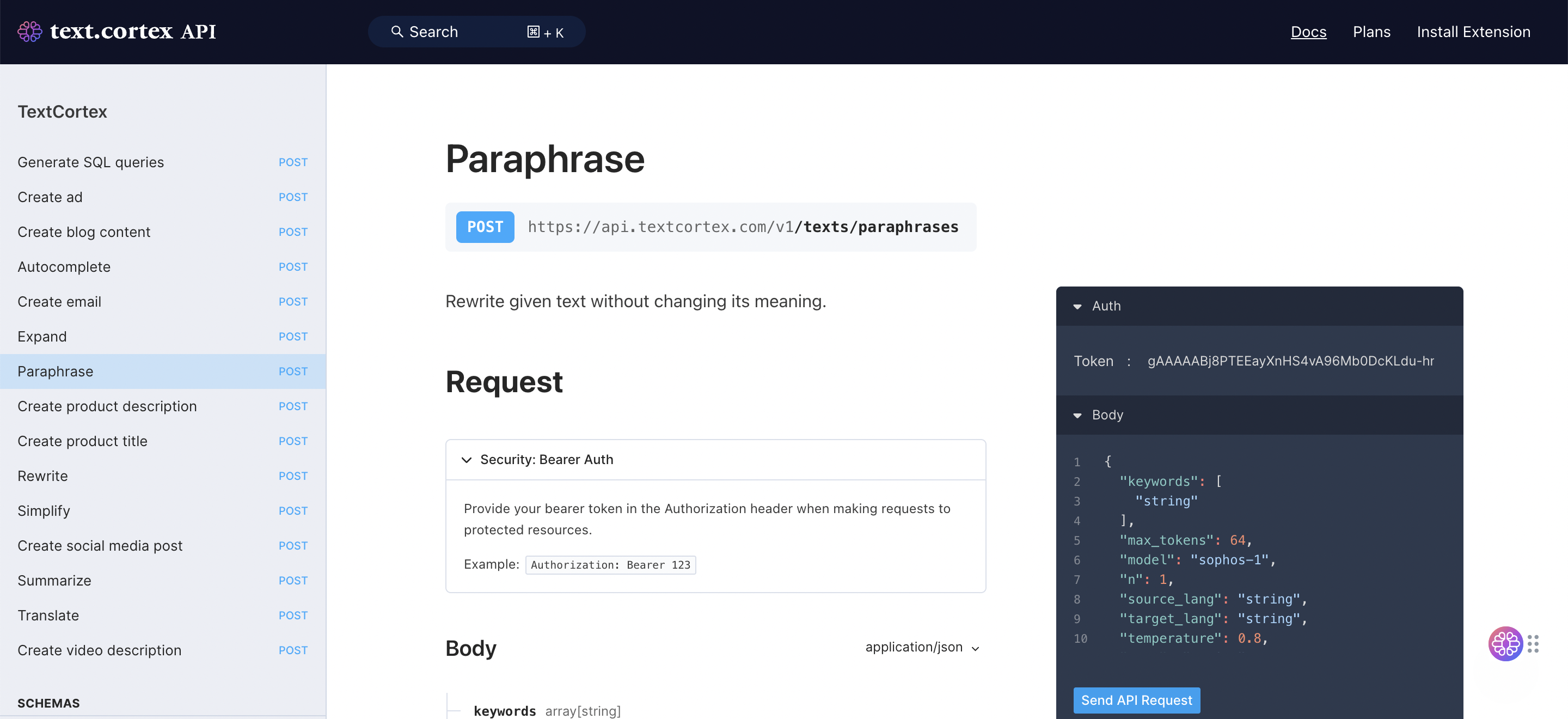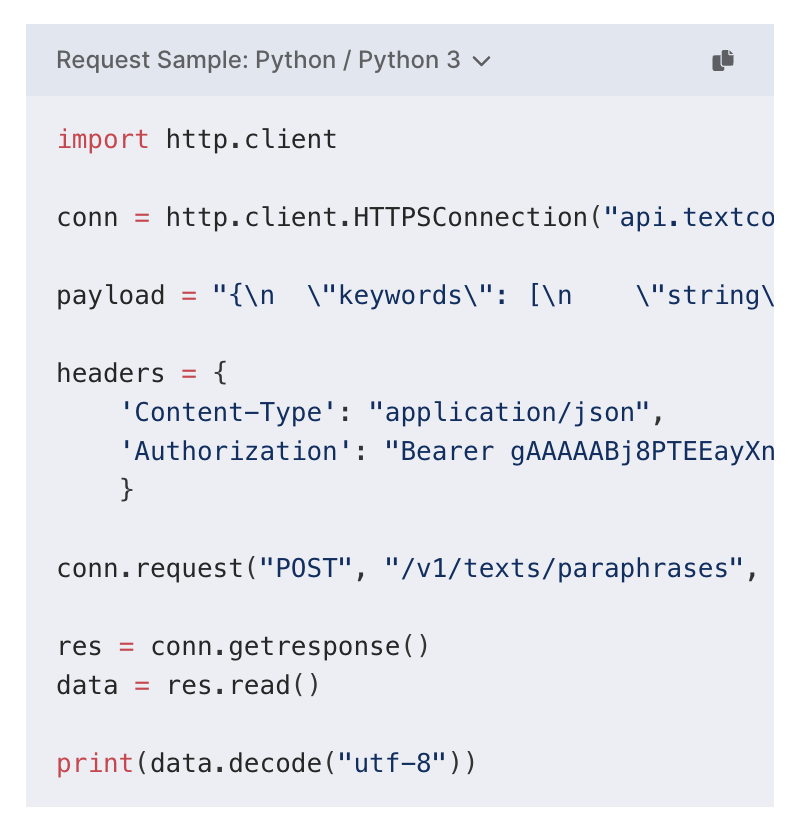What is Natural Language Processing?
It involves analyzing text or speech to extract meaning from it, and then taking action based on that meaning. NLP techniques are used in many applications, such as machine translation, automatic summarization, question answering systems, information retrieval systems, text classification and more. In this context, we are going to be reviewing our Paraphrasing endpoint within our API.
How Does Paraphrasing API Work?
Two sentences can be described as paraphrases if their intended message is the same, however the wording or structure employed is different.
To enhance clarity, jump-start confidence in topic-area content and develop proficient writing skills, rephrasing text may be used.
Bending drafted works' language through rewrite can help improve readability making it easier to digest, while additionally allowing authors to refine their output thereby giving diverse messages a more appropriate tone as well as providing stronger support for the main propositions made.
2 Methods of Paraphrasing in NLP: Rule-Based & ML-Based
Generating paraphrases involves conveying the meaning of an original sentence or phrase using different words and structure.
This can be achieved by two primary methods: rule-based, which involves manually creating rules to transform the original text into equivalent semantic versions and machine learning based, in which paraphrases are generated automatically through data. Examples of techniques used for automated paraphrasing include deep learning, generative adversarial networks (GANs), and reinforcement learning models.
Paraphrasing used to be handled as a language translation task, commonly done by utilizing a bilingual corpus that shifted between languages. However, since the inception of Transformers in 2017, an Artificial Neural Network model which altered the paraphrasing arena and many other NLP endeavors, everything has changed.

This system demonstrated its effectiveness in dealing with data containing long-range dependencies right away. Initially developed to take on NLP tasks, the use of Transformers has been extended and has achieved amazing successes in different fields.
TextCortex’s NLP API for Paraphrasing
If you are looking for a Natural Language Processing service or a Paraphrasing API you can straight integrate into your existing software architecture? Please be our guest, grab yourself a drink and check out our Paraphrasing API powered by transformer models.
Our Documentation: https://docs.textcortex.com/api/paths/texts-paraphrases/post
API Overview: https://textcortex.com/text-generation-api
Sign up and get instant free credits to try our API. (Go to your Account Settings to generate your API Key after you've logged in.)

You can integrate TextCortex API into your own systems and make use of generative AI capabilities for your customized needs. The only thing you need to do is to send a POST request to the relevant endpoint with the required input fields filled out.

How does our Paraphrasing API work?
Text paraphrasing simply is the process of summarizing a block of text in order to make it shorter.
Let's say you have the following block of text:
Generative Pre-trained Transformer 3 (GPT-3) is an autoregressive language model released in 2020 that uses deep learning to produce human-like text. Given an initial text as a prompt, it will produce text that continues the prompt.
A paraphrasing model would return something like this:
GPT-3, which came out in 2020, is a type of autoregressive language model that utilizes deep learning techniques to create content resembling the written expressions of humans. Beginning with an initiating text, it then models and continues what was stated previously.
Practical Use Cases for Paraphrasing API
From rewriting academic essays to augmenting the dataset when you don't have many examples for your text classification model, there are several use-cases for a paraphraser.
Just to name a few, some of the use cases can also include Automated document classification, Machine translation, Information retrieval systems and many more.
Sign up and get instant free credits to try our API. (Go to your Account Settings to generate your API Key for free after you've logged in. We give $5 credits.)

%20(19).png)
%20(7).png)
%20(6).png)
%20(5).png)